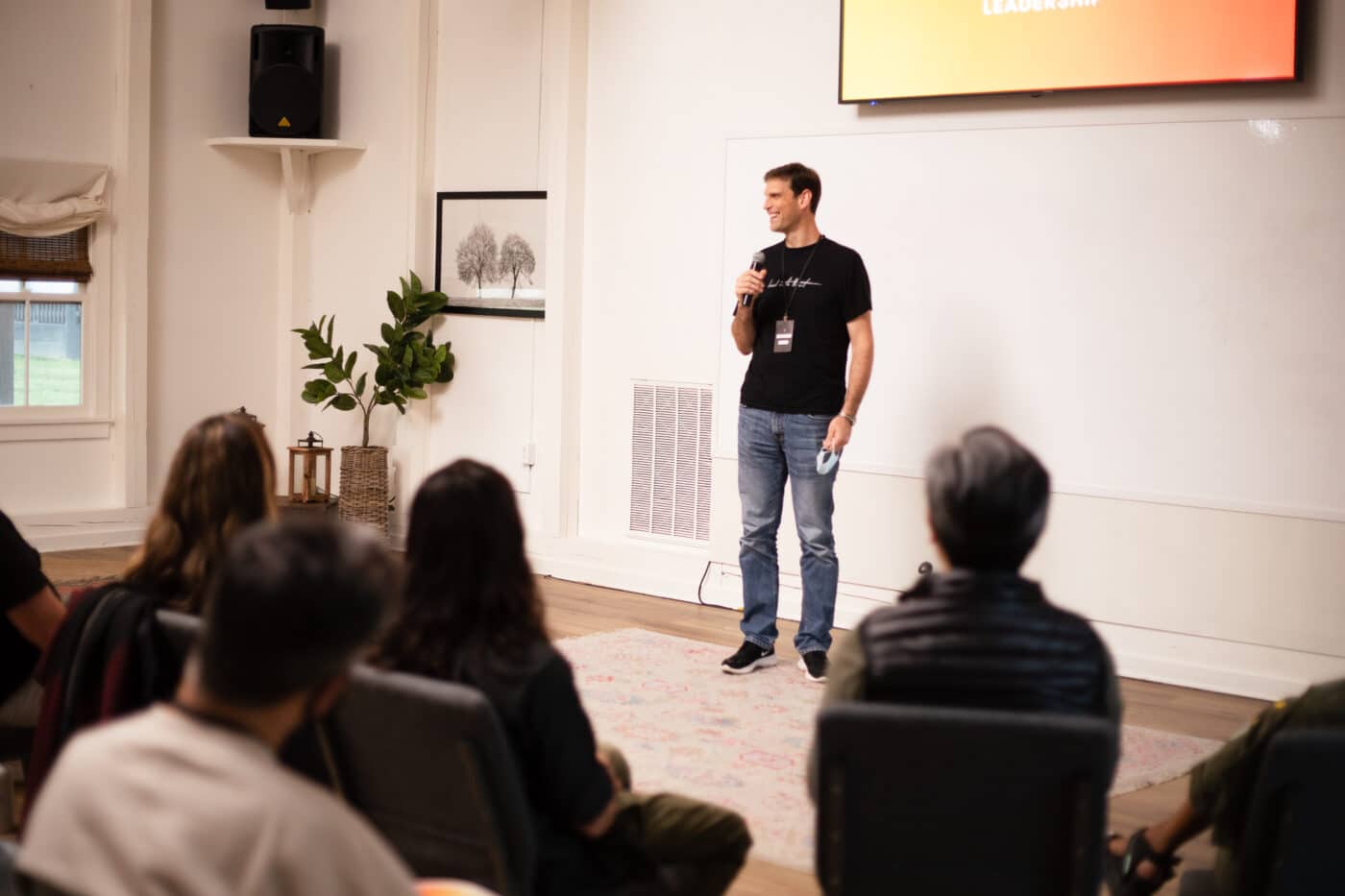What Isn’t Working in the Workplace
(And what leaders can do about it)
It doesn’t take more than a quick scroll through your social media feeds, a catch-up with an old colleague, or a google search to get the sense that what we’ve been doing in our workplaces isn’t working anymore. From employee disengagement, “quiet quitting,” and reports on mental health in the U.S., something needs to change. It is not working for our organizations. It is not working for our leaders. It is not working for our team members. It is not working for our clients.
It is not working for us.
Gallup, in its State of the Global Workplace: 2022 report found that workers are experiencing staggering rates of both disengagement and unhappiness. Sixty percent of people reported being emotionally detached at work and 19% reported being miserable.
Traditional ways of doing “leadership” are failing us and the people we serve, but what is the answer?
3 ways traditional leadership needs to shift
1. Leaders need to be less concerned with personas and embody authenticity
For decades, leadership has been relegated to a specific type of person who possesses very specific skills. Think the detached, high-achieving CEO who leads with a top-down approach.
Traditional leadership methods and mindsets usually amount to micromanagement and lack of empowerment. But the hierarchy of power it has been built on, and the accepted norms and behaviors of the culture within traditional leadership simply won’t suffice for the emerging workforce and the realities of our culture.
The world needs more than top-down leadership and emotionless engagement. In fact, it won’t stand for it anymore. Study after study shows us that workers are increasingly holding their employers to higher standards of care, engagement, and quality. This shift is seismic, but it doesn’t have to be scary. And it doesn’t mean that one type of personality is out and another is in. This way of thinking is far too simplistic.
The authors of Rare Breeds: A Guide to Success for the Defiant, Dangerous, and Different claim that the most effective leaders in our new future will be “unconventional geniuses who hail from every possible background.”
While the landscape of who constitutes a leader is most definitely shifting, the solution is not found in shifting from one stereotypical persona to another.
“The authors of Rare Breed insist that employees know leadership is broken, and they’re ready to look at their leaders and see themselves. Awkward. Impatient. Proud. Wounded. Coarse. BIPOC. Queer. Trans. Bursting with passion, ideas, and energy.” (Fast Company, 2022)
What we know to be true is that employees want leaders who embrace their humanity. They want to see their leaders as human and, in turn, see themselves reflected back. It has nothing to do with a personality type or style. It has everything to do with authenticity and integration.
We believe that everyone can be a great leader—because great leadership is not about employing a specific persona, but rather embodying an integrated, wholehearted way of showing up in the world. Doing this will be your most relevant tool to effectively lead.
We also know employees are going to thrive under the leadership of those who embrace a new way of leading.
2. Leaders need to embrace their greatest resource (before it’s too late)
Whether through “quiet quitting” or the “Great Resignation,” millions of people have walked away from their jobs over the last two years, leaving in their wake a labor void and clearing a path for greater employee autonomy and power.
According to Organizational Psychologist and Best-Selling Author Adam Grant, people are 10x as likely to flee workplaces due to “toxic cultures” than any other reason.
Unless leaders are ready to change the way they curate culture, their most precious resource in their organizations is at risk.
We have reached an inflection point and now is the time to try something different.
Traditional leadership models address the mechanics of business function and structure without addressing what actually has the ability to transform the organization: humans. This approach offers symptom management, at best. Traditional leadership focuses on the transactional vs. the transformational. Until we get serious about moving from a focus on human doings to a focus on human beings, we will continue to apply a band aid to a chronic wound without any sustainable results.
As a recent Harvard Business Review report confirms, when employees are respected by their leaders, their job satisfaction levels go up by as much as 63%. This, in turn, creates a 55% spike in engagement, while employees’ focus heightens by 58%.
As leaders we’re conditioned to think and even be obsessed with efficiency and profit—and as a result don’t think about the emotional wellness of ourselves and teams.
But what if the emotional state of our teams was actually impacting our bottom line?
Gallup reports that employees who are not engaged or who are actively disengaged cost the world $7.8 trillion in lost productivity.
As humans we all want to be seen, valued, and heard. We must also get serious about the emotional health of the people we’re leading and organizations we spend an estimated 1/3 to 1/2 of our lives in, before it’s too late.
3. Leaders need to start with themselves
If we want to sustain success as a leader, we must experience internal transformation. We cannot curate an emotionally healthy culture within our teams and organizations, without prioritizing our own wellness.
Healthy and thriving teams begin with healthy and thriving individuals who are self-aware.
Self-Awareness requires:
- Connection
- Human interaction
- Asking the right questions
- People who have a genuine interest in us
Self-Awareness paves the way for leadership to thrive, but it’s only one ingredient. It needs support in order to truly influence the health and the direction of leadership in our world.
So, what has the power to do that? A framework that champions integration within self, connection with others, and fortifying a culture that unleashes agency, buy-in, and bottom-line results within the human capital of an organization. You may be asking if such a framework exists. And we have good news: it does.
It’s called Emotionally Smart Leadership.
The data is in. EQ outpaces IQ 4 to 1. From sustainability to employee engagement, profitability, and efficiency, emotional intelligence is winning.
Knowing the importance of emotional intelligence is one thing, but actually becoming emotionally smart and building an emotionally smart culture is another. Emotionally Smart Leadership isn’t about fixing something that’s wrong, it’s about optimizing our potential and understanding how to offload the things that are getting in our way or weighing us down.
Onsite’s new Emotionally Smart Leadership course will help you bring meaning and value into your leadership, your workplace, and your culture.




















